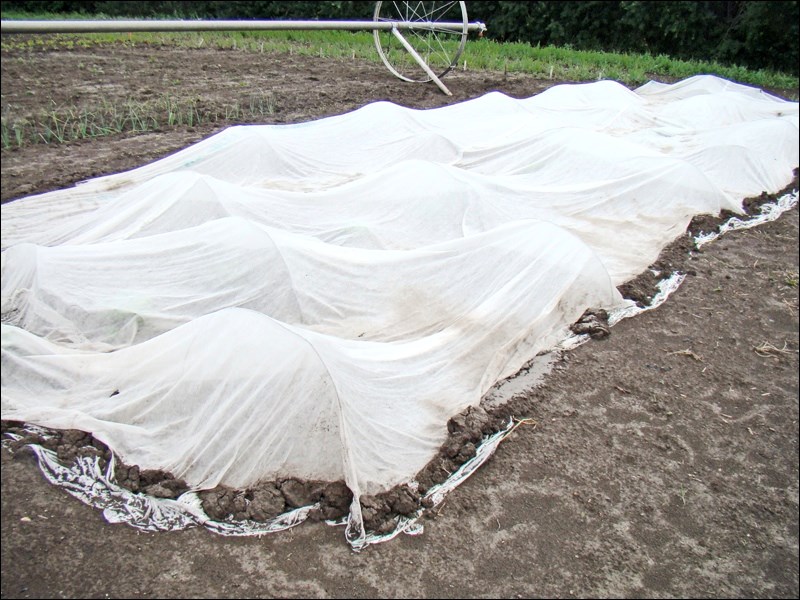When the Welsh poet, Dylan Tomas wrote about going “gentle into that good night” his thoughts were on human mortality. But with the risk of frost on the prairies, it’s our tender flowers and vegetables that come to mind.
There are several ways you can outwit Jack Frost so they continue to produce and bloom through some of the fall. The average frost date for the Saskatchewan prairies is Sept. 15. If day temperatures are predicted to be warm and sunny, why not extend the fall season of your garden and delay that inevitable killing frost?
Covering plants with sheets, blankets, towels or specially designed crop covers is the most common method of frost protection. To avoid breaking plant stems or knocking off the fruit, ensure these covers are not too heavy. If it is going to be a cold, windy night, ensure the edges of the covers are secured so they do not blow off. Coverings made from regular household cloth (such as sheets or towels) do not allow any light through to the plant and should be removed during the day.
You may want to purchase specially made floating crop covers or frost covers at your local garden centre to protect your plants. These crop covers can be left on the plants during the day as they allow some light to pass through. The amount of frost protection available from the crop covers varies from -2 to -5 C, depending on their weight. Crop cover edges also need to be secured from wind.
If you have only a few smaller plants to protect, consider using hot caps (an upside down cone shaped structure that is 30 to 50 centimetres in diameter and made of paper or cloth) or a Wall of Water (a cone-shaped ring of connected plastic tubes filled with water). Hot caps provide a maximum of -2 C frost protection whereas a closed top Wall of Water can provide up to -5 or -7 C of frost protection. The Wall of Water works on the idea that as the water freezes, heat will be released to the plant, thereby protecting the plant from frost. Walls of Water must be opened up during the day to prevent the plants from overheating.
Providing constant irrigation during a freezing period can also be used to protect your plants from frost. By continuously watering or misting your plants during a frost event, the heat released by the freezing water prevents the plants from freezing. This concept is often used in large citrus orchards when unusual frost events threaten a crop. The entire crop is watered throughout the frost period. Even though there may be icicles forming on the branches and fruit, the plant and fruit will not freeze as long as there is liquid water to provide heat.
One word of caution about using the watering method to prevent frost in your garden. The water must be started before the temperature reaches 0 C and continue until the temperature is above 0 C. This may mean you are watering your garden patch for several hours. During the fall, a wet garden does not dry out very quickly. Similarly, a few nights of several hours of watering could result in a wet garden where plants will simply rot.
If you are ready to let nature take its course, and let your plants “go tender into that good night,” remember mature green tomatoes will ripen off the vine, mature pumpkins and winter squash fruit (not the vines) can withstand -2 to -3 C of frost and root crops like potatoes and carrots can withstand several degrees of frost (as long as day temperatures are above 5 C) and parsnips and brussels sprouts sweeten with a few degrees of frost.
I hope your garden was a success this year. Happy harvest!
— This column is provided courtesy of the Saskatchewan Perennial Society (SPS; saskperennial@hotmail.com ). Check our website (www.saskperennial.ca) or Facebook page (www.facebook.com/saskperennial) for a list of upcoming gardening events: Sept. 9, 1:30 p.m., SPS Fall Plant Exchange at the Saskatoon Forestry Farm Park & Zoo Hall, for members only but memberships are available at the door.



